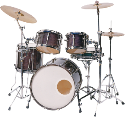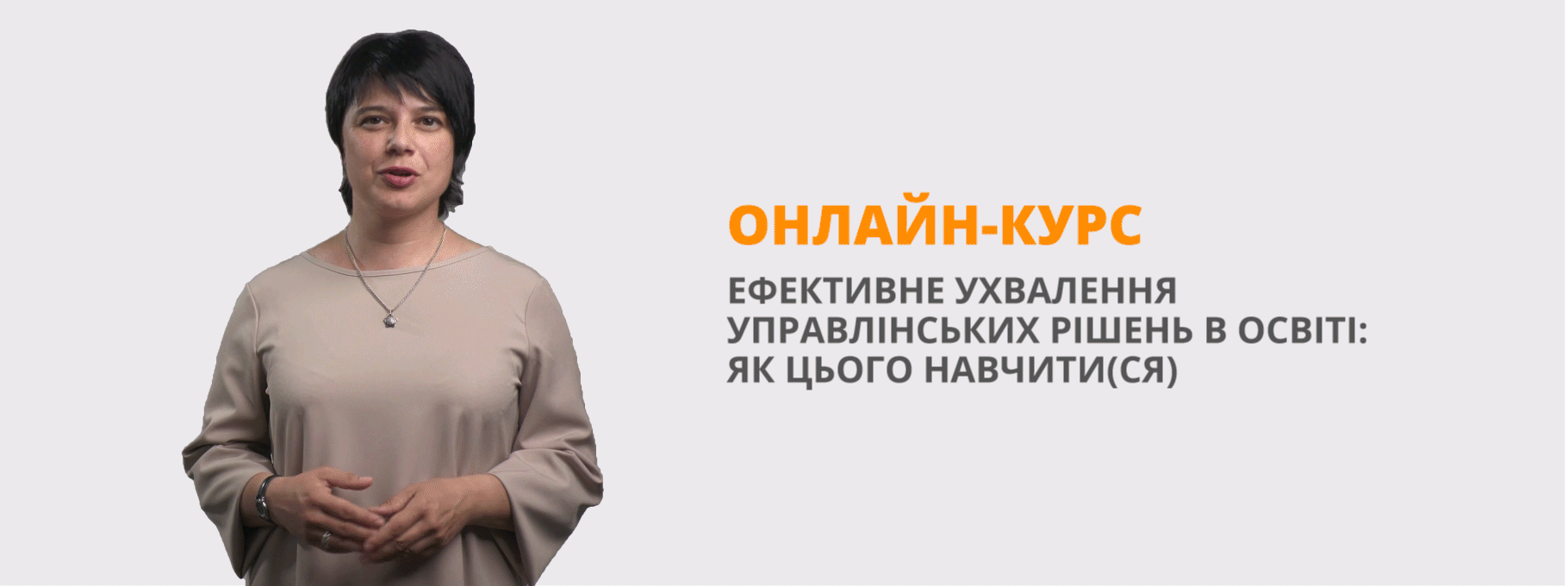Урок "Music in my life"
План- конспект уроку для 8-го класу
Тема: Музика навколо нас
Підтема: Музика в моєму житті
Мета: вдосконалювати навички вживання нових лексичних одиниць, удосконалювати навички усного мовлення, аудіювання й читання, розвивати мовну здогадку й мовленнєву реакцію учнів, розвивати пам’ять; прищеплювати любов до музики; виховувати зацікавленість у розширенні своїх знань.
Компетентності: предметні – вміння розповідати про музикальні вподобання, складання ментальних карт працюючи над текстом, складати монологічне висловлювання використовуючи лексику з теми, висловлювати свою думку, аргументувати свій вибір;
ключові – оцінювати свої вміння й можливості ( ініціативність і підприємливість), виражати власні погляди, почуття і ставлення ( соціальна й громадянська компетентності), спілкуватися іноземною мовою та вчитися продовж життя.
Обладнання: зошит, підручник, картки з завданнями, презентація, відео, інтернет для голосування,
Схематичний план уроку
І. Початок уроку
1. Привітання та повідомлення теми та мети уроку 1хв
2. Мовленнєва зарядка 2 хв.
ІІ. Основна частина уроку 35 хв
ІІІ. Заключна частина
- Підбиття підсумків уроку 1хв
- Закінчення уроку 1 хв
Хід уроку
І. Початок уроку
1. Привітання та повідомлення теми та мети уроку
T: Hello dear students! I am very happy to see you and I hope you’ll be able to solve all my tasks for you today.
Ps: Good morning! We are glad to see you, too. Звучить музика.
T: Our lesson is devoted to music. Today we are going to speak about the role of music in your life, your favourite musical genres and tastes. We will read the text, watch and listen to the video about the famous and popular singers and musicians.
2. Уведення в іншомовну атмосферу.
T: Look at the screen, please, and read the expressions of famous people
“Music expresses that which cannot be said and on which it is impossible to be silent.” William Shakespeare
“Music is moonlight in the gloomy night of life.”Jean Paul
“Music can change the world because it can change people.” Bono
“Without music, life would be a mistake.” Friedrich Nietzsche
“Music is the universal language of the world” (H.Longfellow)
T: Do you agree with these wonderful quots? What is music for you?
II. Основна частина уроку.
- Повторення та активізація ЛО теми «Музика навкруги»
T:То speak about music you will need some words and expressions. Make sure that you know them. Listen and look to the following definitions and finish them.
1. A group of people who play different instruments in the theatre or in concert hall ( an orchestra)
2. It is recorded music accompanying and synchronised to the images of a motion picture, drama, book, television program, radio program, or video game (soundtrack)
3. A musical performance given in public, typically by several performers or of several compositions. ( concert)
4. Someone who makes up songs and music ( a composer )
5 The process of achieving success in a different field or style, especially in popular music. ( crossover)
6. A group of people who gathered to listen to music ( an audience )
7. Person who sings, especially professionally. ( a singer)
8. An event in which people compete for supremacy in a sport or other activity, singing or dancing. (a contest)
T: Now look at these words. Each task during our lesson will be about this word or like this concept.
- Т: The first one is ORCHESTRA.
- A section in an orchestra is a group of musicians playing a specific group of instruments. Which instruments do they play in each section. Choose from the instruments below.
https://learningapps.org/view23708003
The string section ( cтрунна)( the cello(2), the violin, the double bass (3))
the brass section ( духова)( the trumpet (10), the trombone(9), the saxophone (7))
the woodwind section (дерев’яно-духова)( the flute (5), the oboe(6), the clarinet(1))
the percussion section(ударна)(the drums (4), the triangle(8), the xylophone (12))
The triangle, the trumpet, the saxophone, the cello, the xylophone, the flute, the clarinet, the violin, the drums, the trombone, the oboe, the double bass.
T: What musical instrument can you play or you want to play?
P: I can play…
P2: I want to play…
 1)
1) 2)
2) 3)
3)  4)
4)  7)
7) 5)
5) 6)
6)  8)
8)  9)
9) 10)
10)
 11)
11)  12)
12)
- T: The next section is SOUNDTRACK. Listen to the soundtrack and write the three words you hear in each group. Ex 4 p 140. Аудіододаток.
1. harp, flute, organ;
2. piano, orchestra, choir;
3.rock, R&B, hard rock.
- The next section is CONCERT. Looking at the task, you ask: Why concert? All bold words we can prefer to concert. ( instrumental, singing along , whistle, recorded music, live music, the lyrics, tune, beat, catchy.) Read the sentences about music. Match the words in bold with the definitions.
1. I prefer songs to instrumental music. (d)
2. I love driving a car and singing along to the songs on the radio. (h)
3. I am a hopeless singer, so I usually just whistle or hum along. (c )
4. I don’t really enjoy recorded music (f) on the radio or on CDs. I prefer live music. (e)
5. I am not really interested in the lyrics (a) — it’s the tune (g) that’s important for me.
6. Dance music is my favourite — it has got a great beat. (i)
7. Sometimes I hear a song and then I can’t get it out of my head. It’s very catchy. (b)
a. the words
b. the tune or song that is easy to remember
c. make a musical noise with your lips together
d. music composed for instruments, not voices
e. music played in front of the audience
f. music played in a studio and put on a CD or tape
g. melody
h. sing as you listen
i. musical pulse or rhythm
- Подання текстів для читання.
T: The next group (section) is COMPOSER. Look at the pictures. Do you know these men? Yes , these are Mykola Lysenko and Myroslav Skoryk.
You’ll work in group. You task to look through the texts and make a mental card.
Mykola Lysenko
(1842—1912)
Mykola Lysenko is the father of modern Ukrainian classical music.
His prolific life’s work laid the foundation for the further development and expansion of Ukrainian musical culture. He influenced a large group of Ukrainian composers, including Stetsenko, Stepovyi, Leontovych, Koshyts, and Liudkevych. A compilation of Lysenko’s works in 22 volumes was published in Kyiv in 1950–1959.
Lysenko was a composer, ethnomusicologist, pianist, and conductor.
He studied at Kharkiv and Kyiv Universities and, later, at the Leipzig Conservatory (1867–1869). From 1874 to 1876 he studied orchestration under Rymskyi-Korsakov in St. Petersburg. In 1904, he founded his own School of Music and Drama in Kyiv.
The list of Lysenko’s operatic compositions include Black Sea Cossacks (1872); three operas based on the works of the Ukrainian writer Mykola Hohol — Christmas Night (1873–1882), The Drowned Maiden (1883) and Taras Bulba (1890); and the operettas Natalka from Poltava (1889) and Aeneas (1911).
Himself a well-known pianist, Lysenko composed a piano sonata, two rhapsodies, a suite, a scherzo and a rondo, as well as an abundance of smaller pieces, including songs without words, nocturnes, waltzes and polonaises. He also wrote a number of works for strings. Of the Ukrainian composers, Lysenko was the most committed to the art song genre. Lysenko’s 133 art songs (lirychni pisni in Ukrainian) relate a wonderfully descriptive and passionate story of the 19th- and early 20th-century European life.
Myroslav Skoryk
(1938—2020)
Myroslav Skoryk was a Ukrainian composer and teacher. His music is contemporary in style and contains idioms from diverse sources including German, Welsh, English, and Eastern European artistic traditions.
Myroslav Skoryk was born in Lviv, Ukraine. His father was a historian and an ethnographer, while his mother was a chemist. Although his parents did not have special musical training, his mother played the piano and his father played the violin. Skoryk was exposed to music in the household from an early age. Skoryk started to play the piano at the early age of 6 thanks to his grandmother’s sister, the world-famous Ukrainian opera singer soprano Solomiia Krushelnytska. She was the one who first noticed Myroslav’s impeccable hearing and suggested sending him to a music school.
In 1948, when Soviet repressions intensified, the Skoryk family was deported to Siberia. There, in a mining town of Soviet Russia, he continued to play the piano. “They started to consider me a prodigy,” he recalled, “and they drove me to the regional town of Kemerovo and showed everyone saying whatever number of notes you press for him, he will name all of them at once.” After Stalin’s death, he was finally able to return to Lviv at the age of 16. There, he enrolled in the local conservatory. In his hometown Lviv, as a fan of jazz, Skoryk wrote the first composition offering a Ukrainian twist on the music style — a combination of jazz and rock notes for a newly created band Veseli Skrypky (Merry Violins) called Do Not Trample Lilies of the Valley. The song was a hit of 1963.
Known for jazz and Carpathian folk motifs, his enchanting compositions have been played by orchestras across the globe, and even blessed by Pope John Paul II. Some of Skoryk’s titles included longtime artistic director of the National Opera of Ukraine, Hero of Ukraine, and People’s Artist of Ukraine. But his masterpieces speak most strongly of all. His most famous and deeply touching Melody in
a Minor has become one of the nation’s spiritual anthems, and has
been performed worldwide.
From energetic twists to operas, Myroslav Skoryk’s music works had
no boundaries. They offer a full spectrum of emotions and rhythms.
The thought-provoking and evocative opera Moses, adapted from the
poem by Ukrainian writer and poet Ivan Franko, is another great
product of the composer’s multifaceted talent.
- T: The next section is CROSSOVER. Let’s revise what is the CROSSOVER.
It is the process of achieving success in a different field or style, especially in popular music.
This can be seen, for example, when a song appears on two or more of the record charts which track differing musical styles or genres.
So now we speak about music styles.
T: Read the names of music styles. Match the styles of music to their definitions.
Music styles Definitions
Rock d) a) music that is considered to be important and serious and
that has a value that continues for a long time
Pop e) b) a type of music that has a strong lively beat and parts to
play alone and the players often improvise
Rock-n-Roll c) c) a style of music with a strong loud beat played on guitars
and drums, which first became popular in the 1950s
Classical music a) d) a type of music with a strong beat, played very loudly
on electric guitars
Jazz i) e) a kind of popular dance music with a regular steady beat
and spoken words
Rap b) f) modern music that is popular, especially with young
people, and usually has simple tunes with a strong beat
Dance h) g) a type of traditional music in which people sing and play
instruments without any electronic equipment
Folk music g) h) a name for some types of modern music such as house,
techno, etc., that are made using electronic equipment and
have a very fast strong beat
Hip-hop f) i) a type of music that developed among African-American
musicians using Rap and samples (short pieces of
recorded music or sound) which are repeated and
combined with musical instruments.
T: What kinds of music do you like? What is your favourite style?
- T: The next section is AUDIENCE. It is a group of people who gathered to listen to music. Let’s learn what music tastes are dominated in our class.
Scan the QR-code and choose the style of music do you like the most.
https://www.menti.com/xvmnrrybiz

T: Look at the screen, here are the results. Most pupils in our class prefer…
- T: As we know different singers are represented in different styles. So next section is SINGER. You task was to make individual project on a musician, a singer or a band of your choice. Ex 8 p 155.
The pupils present their projects.
- T: Let’s go to another section. It’s CONTEST. Its an event in which people compete for supremacy in a sport or other activity, singing or dancing. The most famous song contest is Eurovision. This weekend we had our Ukrainian national vidbir too. Now also we’ll have a contest.
Your task was at home to look through the information about Eurovision song contest and Ukraine like a member of it.
Test / Kahoot!
https://create.kahoot.it/details/ca3e04c2-ecce-4c4f-bfcc-63cd7f52c2d8
1. Today, Eurovision is a competition…
a …only for countries which are members of the European Union.
b …not only for members of the EU.
c …for all the countries including the USA.
2. Eurovision is…
a …a boring and old-fashioned show.
b …one of the longest-running television programmes in the world.
c …the best show for children.
3. The country which has won Eurovision the most times is…
a ... Sweden
b …Norway.
c …Ireland.
4. Ukraine was first presented in Eurovision song contest in 2003 by…
a. Ruslana
b. Oleksandr Ponamarev
c. Tina Karol
5. The winner of Eurovision in 2016 was…
a. …Ruslana
b. …Jamala
c. … Verka Serduchka
6. How many times did Ukraine win the Eurovision Song contest?
a. 1
b. 2
c. 3
7. Where was Eurovision song contest in 2021?
a. Rotterdam
b. Paris
c. Amsterdam
8. In 2021 the winner became the country…
a. France
b. Italy
c. Ukraine.
9. In 2021 the Ukrainian band GO-A took the place…
a. 4
b. 3
c. 5
T: The winner of our contest is…
10. Who will represent Ukraine in 2022 in Turin?
a. Wellboy
b. Kalush Orchestra
c. Alina Pash
Let’s look at our scoreboard. And the winner of our contest is… .
III. Заключна частина.
- Підбиття підсумків уроку.
T: Our lesson is coming to be over. Did you like it? I hope you did. You were very active and hardworking and you’ll get the marks: ………….
I want to tell you “ Listen to music and your life will be bright and exciting. It may change your life in better. Now let listen to the winner of Ukrainian national final (vidbir) Alina Pash “ Тіні забутих предків”..
THANK YOU FOR THE LESSON!


про публікацію авторської розробки
Додати розробку
